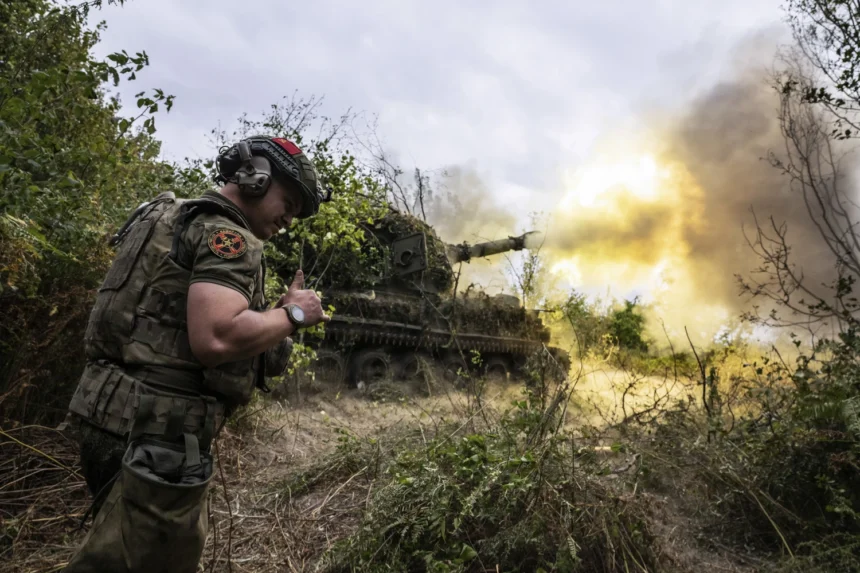Moscow, April 30, 2025 — Russia’s ejection of Ukrainian troops from the Kursk region, described as the largest Ukrainian incursion into Russian territory since World War II, is being hailed by the Kremlin as a strategic victory and a necessary precondition for resuming peace negotiations with Ukraine.
The three-month-long Kursk offensive began in August 2024, when Ukrainian forces surged across the Russian border, occupying nearly 1,400 square kilometres. The bold counterattack was backed by advanced Western weaponry and reportedly supported by mobile drone units. However, it proved costly for Ukraine both militarily and politically.
Putin Declares Ceasefire as Peace Talks Resume
The announcement of Russia’s military success was closely followed by a unilateral three-day ceasefire declared by President Vladimir Putin to mark the 80th anniversary of the Soviet Union’s victory in World War II. Kremlin insiders told Reuters that the presence of Ukrainian troops in Kursk had previously made any meaningful peace deal politically untenable for Moscow.
“Essentially, Ukraine traded territory it values the most—its own—for territory it couldn’t hold forever,” said Christopher McCallion of Defense Priorities, a Washington-based think tank advocating restrained U.S. foreign policy. While Kyiv claimed the incursion served as a distraction to limit Russia’s gains in eastern Ukraine, it has now lost the leverage it hoped to gain through territorial bargaining.
North Korean Support and Kursk’s Historical Symbolism
North Korean troops and munitions reportedly played a significant role in Russia’s defense and counteroffensive operations. Putin has expressed his personal gratitude to North Korean leader Kim Jong Un, highlighting a deepening alliance amid Western sanctions.
Kursk’s historical symbolism—site of the largest tank battle in 1943—adds emotional weight to Russia’s military push. The Kremlin is using the victory to bolster domestic morale ahead of major national celebrations, and to project strength in upcoming negotiations.
Heavy Casualties and Strategic Consequences
Russia claims Ukraine lost over 76,000 soldiers and more than 400 tanks during the Kursk operation. Ukraine counters that Russian losses exceeded 62,000 troops. Independent verification remains impossible. Meanwhile, Russia has expanded its territorial control in Ukraine to an area nearly equal in size to Pennsylvania.
The failure to hold Kursk has impacted Ukraine’s eastern defenses. Russian forces have reportedly pushed into Sumy, with officials confirming the loss of over 300 square kilometers in March alone. Russia’s military chief, Valery Gerasimov, confirmed that Kursk had been fully cleared and that operations in Sumy were ongoing to establish a “buffer zone.”
Trump-Led Peace Talks Face Critical Juncture
Amid these developments, U.S.-led peace negotiations continue, spearheaded by President Donald Trump. However, without Kursk as a bargaining chip and with vast territorial losses, Ukraine’s leverage appears diminished. Trump has suggested Ukraine may have to accept territorial concessions—including Crimea and parts of Donbas—as part of a peace deal, a position widely criticized in Europe.
Germany’s Defence Minister Boris Pistorius warned Ukraine not to accept a “capitulation” deal, stating Kyiv “should not go as far as the latest proposal by the American president.” The U.S. has warned it may abandon the talks altogether if meaningful progress is not made soon.
Valery Gerasimov, Russia’s top general who is directing the war, told Putin on Sunday that Russia had cleared Kursk when the last Ukrainian units were pushed out of the village of Gornal beside the border.
He said Ukraine had stationed 60,000 troops in Kursk at the height of the operation, undermining its other forces, and praised North Korean troops for fighting “shoulder to shoulder” with their Russian comrades in arms in Kursk.
Gerasimov told Putin that in accordance with his orders Russian forces were “continuing” to carve out a buffer zone, and had taken 90 square kilometres of Ukraine’s Sumy region.
Ukrainian officials have previously said Russian assault groups were present in Sumy.
Looking Ahead
As the world watches the next round of shuttle diplomacy unfold, one thing is clear: the expulsion of Ukrainian troops from Kursk has reset the battlefield’s political calculus. Whether it clears a path toward peace—or emboldens further aggression—remains uncertain.
— Reported by Guy Faulconbridge | With Reuters


